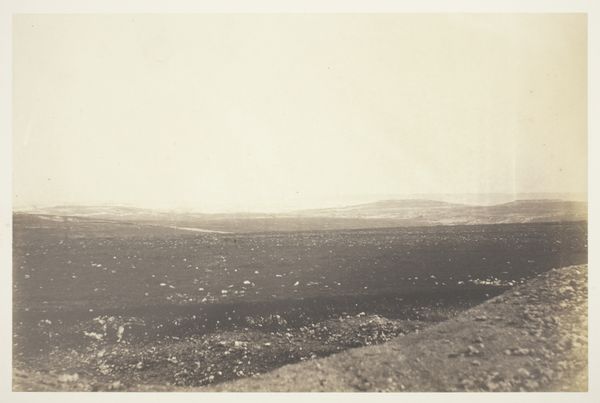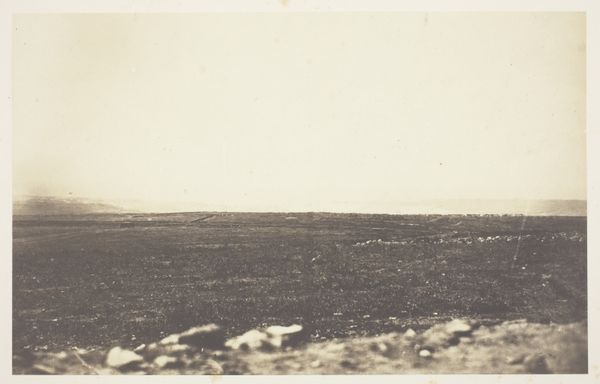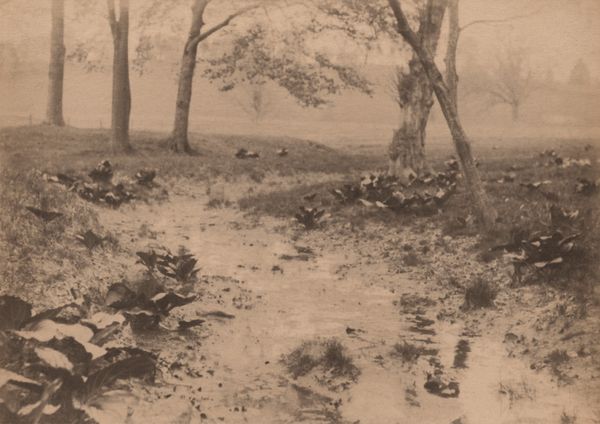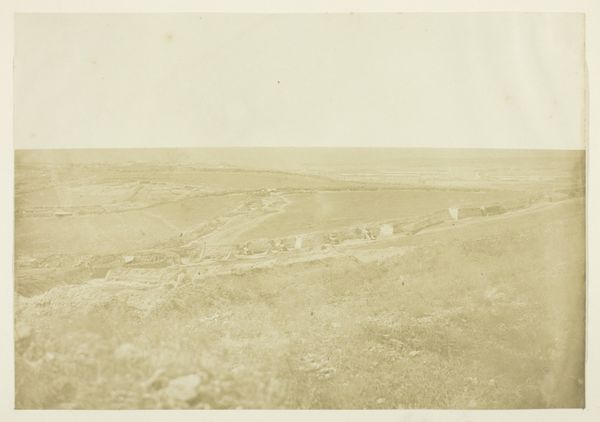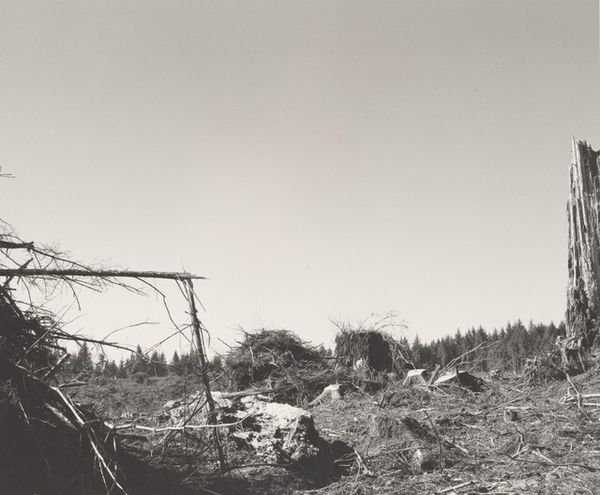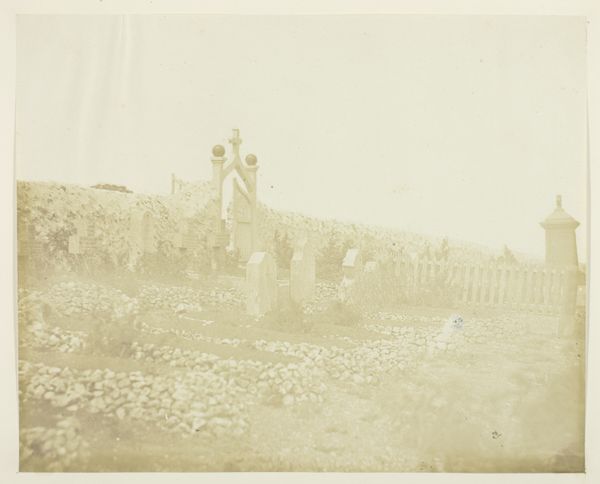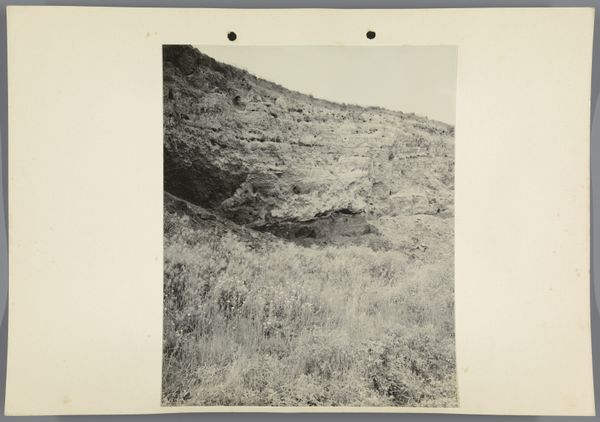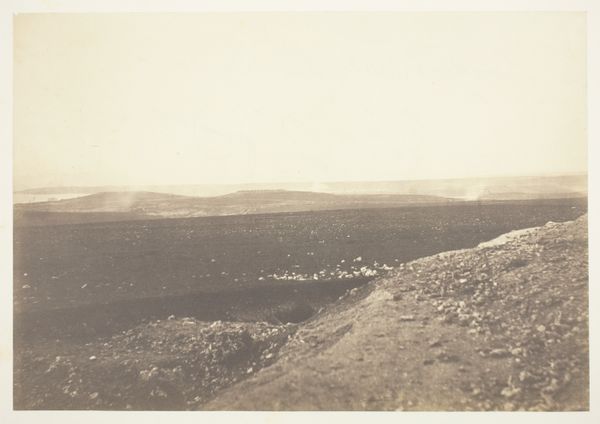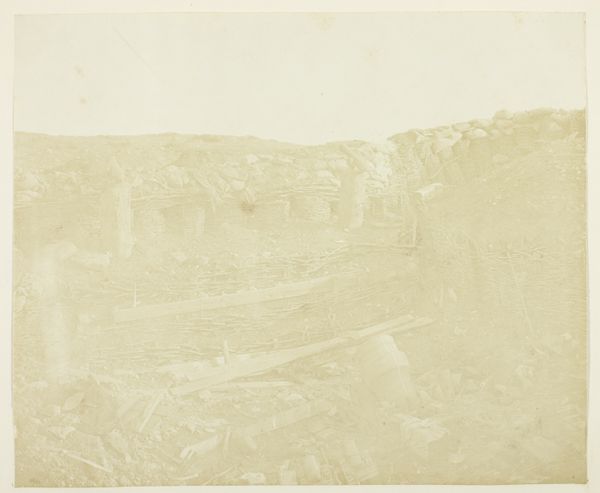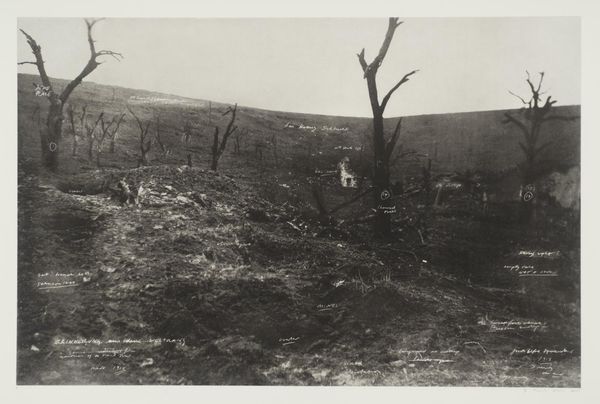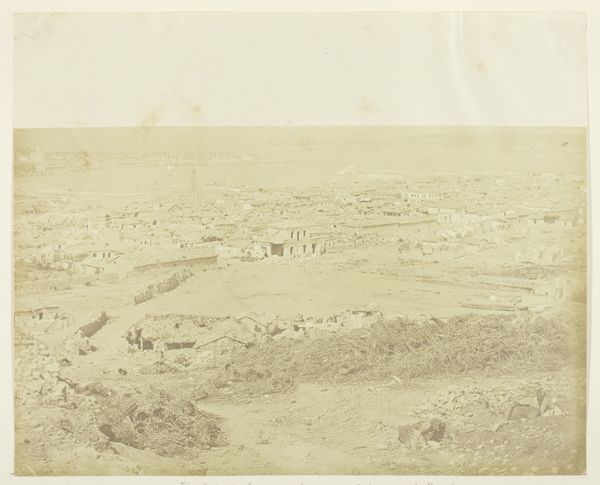
photography
#
16_19th-century
#
natural tone
#
landscape
#
natural light
#
photography
#
realism
Dimensions: 22.6 × 29.4 cm (image/paper); 32.2 × 40.5 cm (mount/page)
Copyright: Public Domain
Curator: This stark image is "Road Opened Through Trenches," a photograph by James Robertson from 1855, and currently residing here at The Art Institute of Chicago. It offers us a grim glimpse into the Crimean War. Editor: Grim is right. There's an oppressive quality to it. The limited tonal range, almost monochromatic, adds to the feeling of desolation. Note the dominance of horizontals – the trenches themselves, the low horizon line – which emphasizes the flatness and lack of escape. Curator: Precisely. The image was taken near Sevastopol and reflects the technological advancements, as well as the devastating reality, of modern warfare. Early photography like this brought the brutality of conflict home in a new and disturbing way. Robertson documented the aftermath rather than the action, a decision laden with socio-political meaning. Editor: That visual stillness after battle concentrates the image’s power. I'm particularly struck by the contrast of texture – the rough, piled sandbags of the trenches in the foreground versus the seemingly endless, broken terrain extending into the distance. How would you read the tonal similarities between these two separate visual plains in the photograph? Curator: Interesting point. I’d suggest this merging reinforces the universality of the image. There is the immediate context of the war itself, of course. However, Robertson cleverly positions the eye toward a shared understanding of collective pain. It makes you think about power, human fragility, and the social cost of progress. Editor: So, you read the flag in the distance as a false, empty promise? Curator: Not necessarily. The flag is indeed a loaded signifier, reminding us that behind every landscape of conflict lies a complex web of ideological and nationalistic fervor. What reads to you as tonal similarity reads to me as visual and structural reinforcement. Editor: I see your point. Despite my focus on form, it is impossible to ignore the photo’s power to communicate the devastation of war through visual elements, making me think of landscape tradition through ruin and wreckage. Curator: Agreed. "Road Opened Through Trenches" provides a poignant commentary on the consequences of conflict, a photograph of war that resonates through time.
Comments
No comments
Be the first to comment and join the conversation on the ultimate creative platform.
